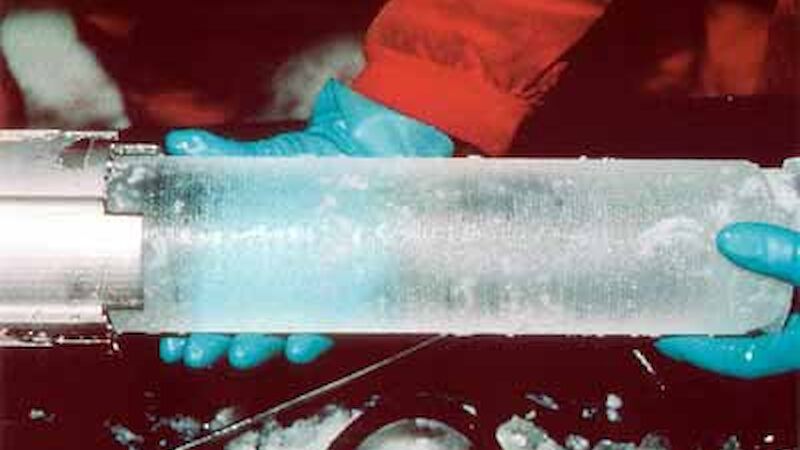Recently published research based on studies of Antarctic ice cores by Australian and French scientists has provided new information about the way rapid climate changes occur, and how the climates of the Northern and Southern Hemispheres are connected.
The research used the Australian deep ice core from Law Dome, near Casey Station. This core extends from the surface of the ice cap to the bedrock 1200 metres below and provides a record of climate variations over the last 80,000 years or more.
What’s in an ice core and what does it tell us?
The ice sheets of Antarctica, Greenland and alpine glaciers are composed of snow that has accumulated for up to hundreds of thousands of years. In such glaciated regions, snow survives each summer season and is buried by subsequent snowfalls, eventually becoming compressed into solid ice. As the snow is buried, it carries with it information which forms an archive of past climate and environmental changes.
To unlock this archive, scientists use coring drills to bore holes into the ice sheets. Cores are typically recovered in sections 1–3m long (depending upon the drill), and have diameters between 5 and 50cm. The cores are extracted and generally returned from the field for analysis in laboratory facilities, although some analysis is frequently undertaken in the field.
The information in the ice is carried in dust, chemical impurities, trapped air bubbles, and in the isotopes of hydrogen and oxygen of the ice itself. The mix of these isotopes in the snow is a good measure of past climatic temperatures. The other parameters provide information on atmospheric composition, precipitation amounts, volcanic activity, atmospheric chemistry, atmospheric circulation and even biological activity. This rich record of information makes ice cores one of the best tools for the study of past climate and environment.
This latest study, published in the international journal Science (volume 297, September 13, 2002, pp. 1862–1864), focuses on the end of the last ice age, around 14,500 years ago. The work compared temperature changes at Law Dome (which are recorded by isotopes of oxygen in the ice) with those in Greenland. The Greenland record shows a very abrupt climate warming that is well documented, and was widely thought to be triggered by changes in North Atlantic ocean circulation. The conventional view of this, and other abrupt warmings during the last ice age, has been that reorganized ocean circulation carries more heat northward, leading to a subsequent cooling in the Southern Hemisphere — an effect known as the ‘bipolar see-saw'.
Comparisons with the Law Dome record were a surprise, however, because they show that cooling occurred in the south around 15,000 years ago, about 500 years ahead of the abrupt Greenland warming. This finding poses a challenge to discover climate processes that might explain these observations. It is unclear whether the changes are being driven from the south, or whether, on these timescales, the changes are not even related. Computer models of climate need to be able to reproduce these past changes for their predictions of climate change to be accurate and reliable.
The abrupt Greenland climate change 14,500 years ago that was the focus of this work was one of several similar events during the last ice age. Together they give a picture of a climate system that is not necessarily as stable as recent experience might suggest. Some computer models indicate that greenhouse warming of the climate system might push it once again into an unstable state, where a major reorganization of ocean circulation brings large and rapid changes to some regions. This study and others like it which explore the detail of global responses to past abrupt changes, lead to a better understanding of the climate system and will hopefully help assess the likelihood of abrupt changes in the future.
Tas van Ommen, Glaciology Program, Antarctic Cooperative Research
Centre & AAD

